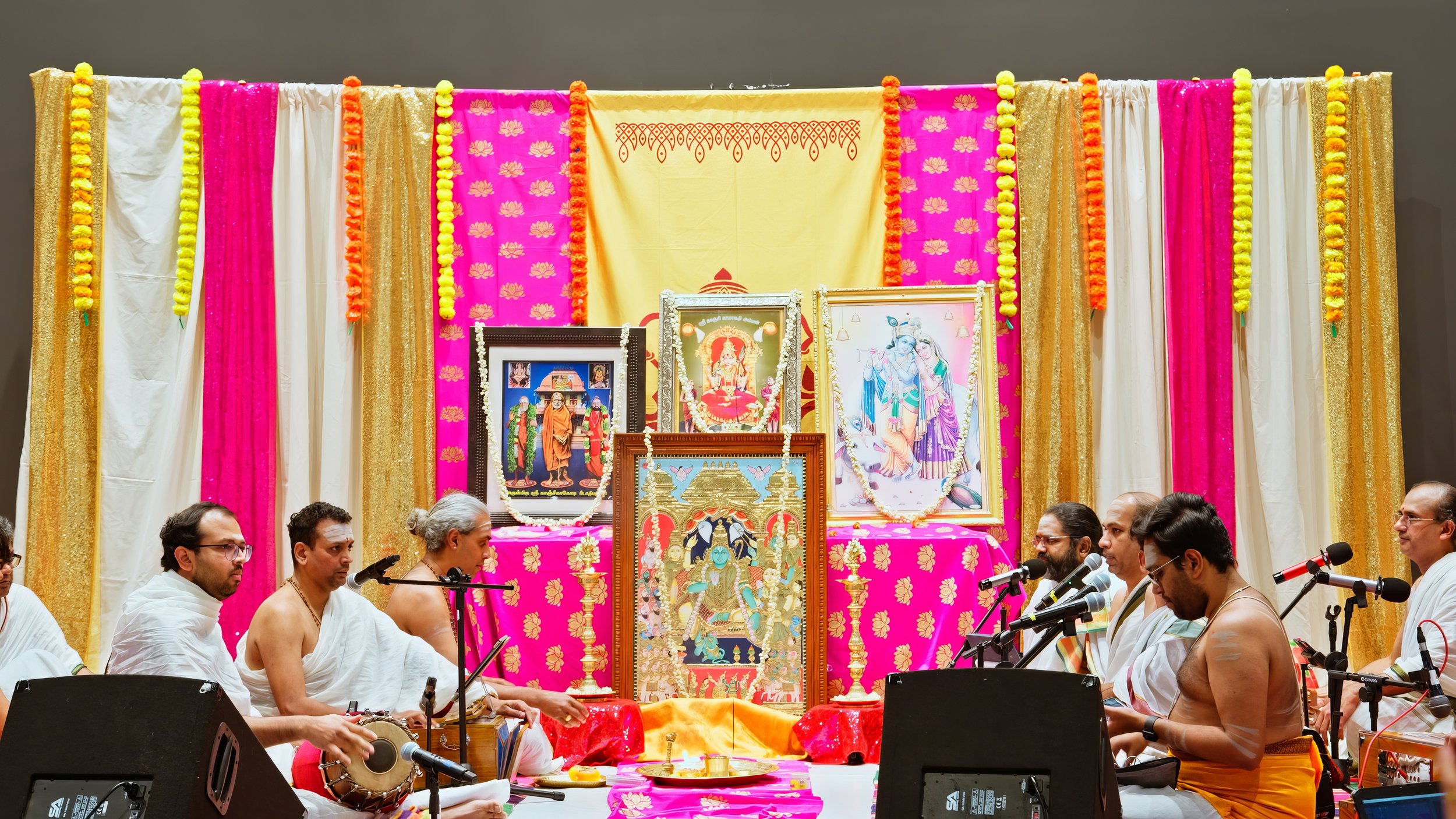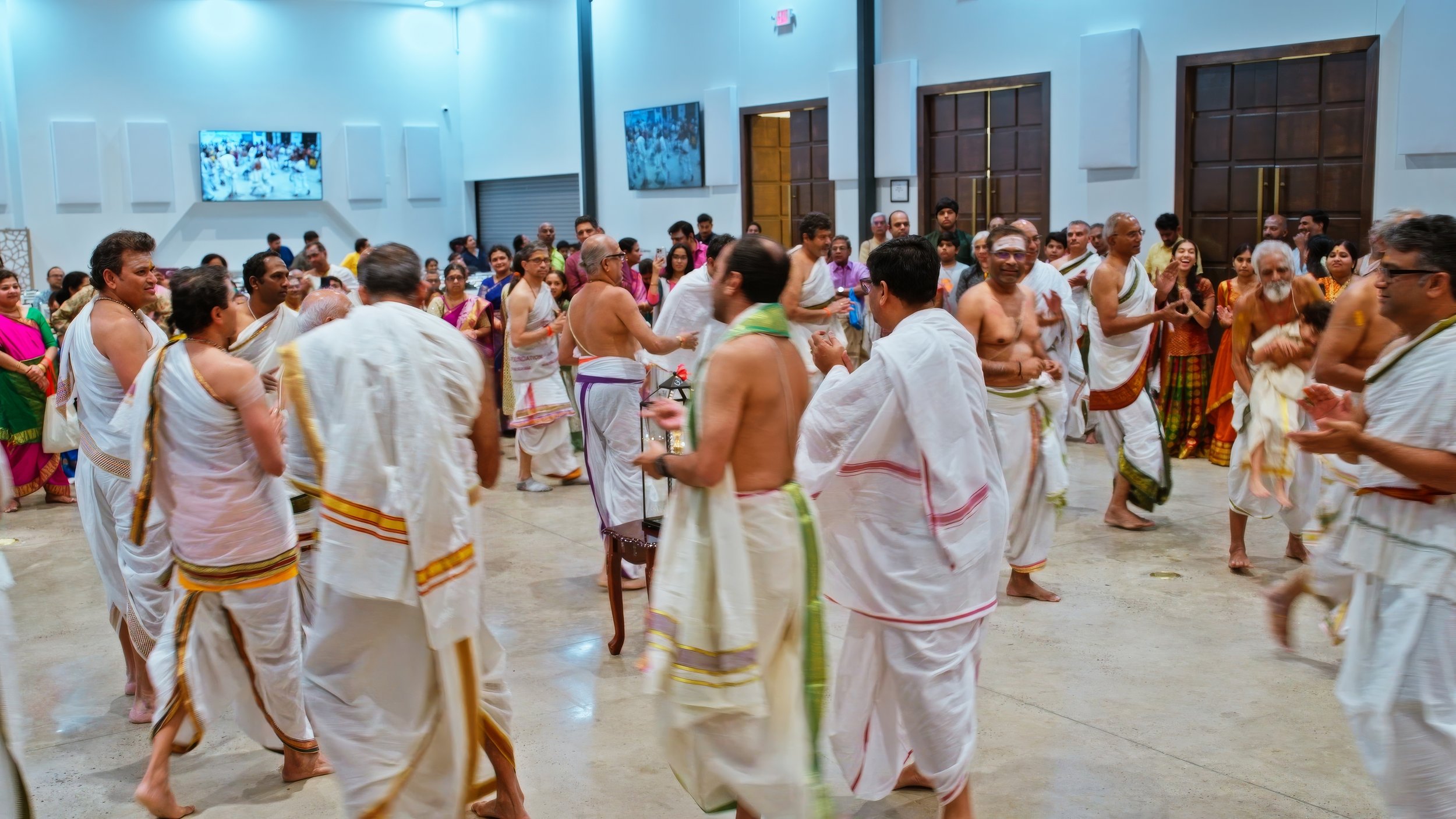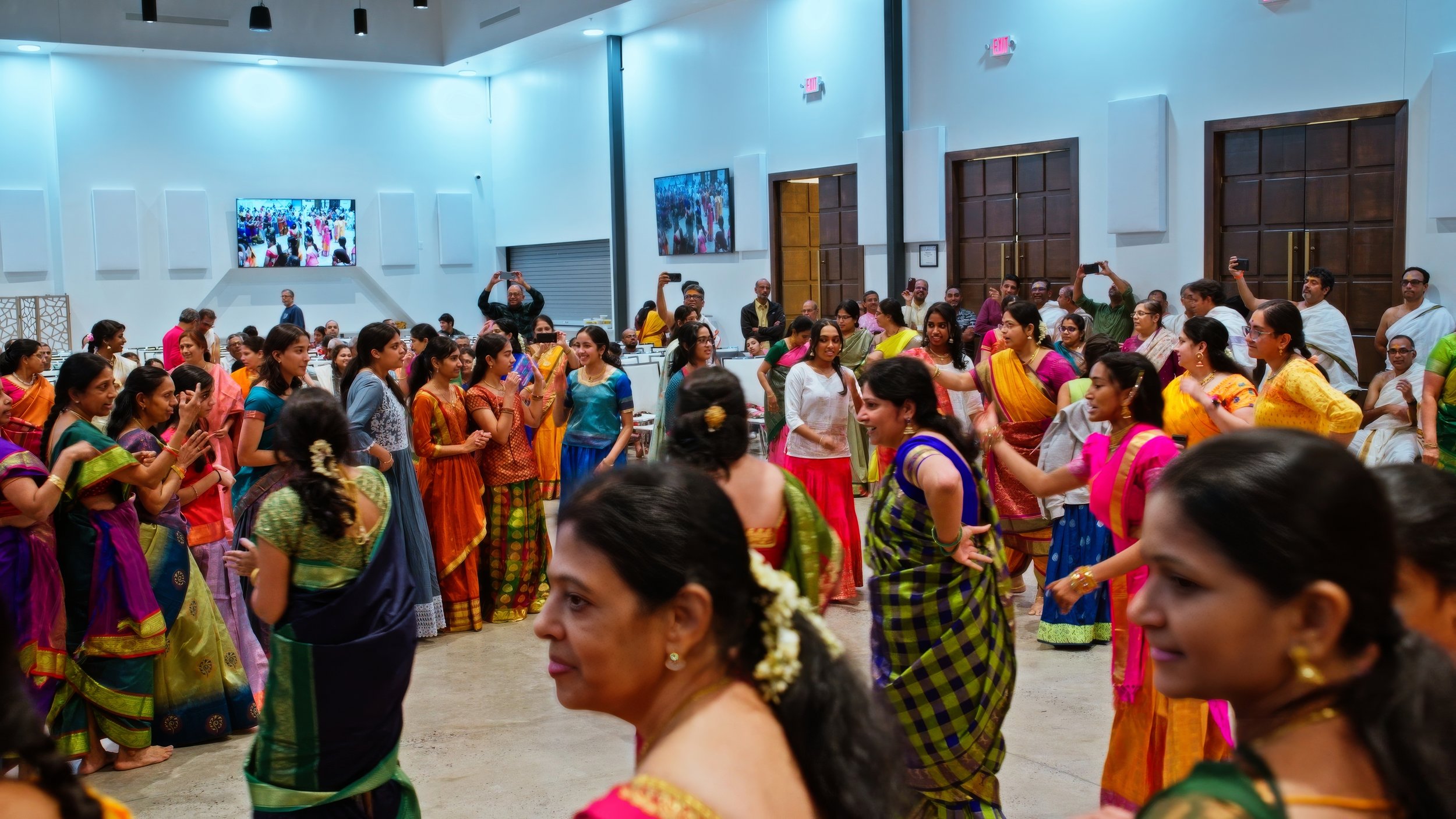Sampradaya Namasankeertanam: A Journey to the Divine
Venue: Atithi Venue, Plano.
Video & Live: Saravana Creations
Sampradaya Namasankeertanam
Sampradaya Namasankeertanam is a profound expression of devotion that has its roots in the Srutis, Puranas, and Itihasas. This ancient tradition embodies the essence of Bhakti (devotion) and serves as a bridge between the soul (jivatma) and the Supreme (paramatma). Established in the 16th and 17th centuries by three revered saints—Sri Bodendra Saraswati Swamiji, Sri Sridhara Ayyavaru, and Sri Sadhguru Swami—this practice has flourished over centuries, inspiring countless devotees.
The Core of Sampradaya Namasankeertanam
At the heart of this tradition lies the beautiful compositions (kritis) of saintly composers such as Sri Bhadrachala Ramadasu, Sri Narayana Tirtha, Sri Purandaradasa, Sri Sadasiva Brahmendra, Sri Gopalakrishna Bharati, and others. These kritis capture the essence of devotion, describing the divine forms and qualities of Bhagavan. The Ashtapadi from Sri Jayadeva Goswami’s Gita Govinda, which symbolizes the union of jivatma and paramatma, forms the cornerstone of this tradition.
Divyanamam
One unique component of this sampradayam is Divyanamam, a segment where devotees immerse themselves in divine names and kritis. This practice is considered a nitya karma anushtanam—a daily spiritual duty. Those who follow this path are lovingly referred to as Bhagavatas.
The Flow of a Sampradaya Namasankeertanam Program
The Namasankeertanam session is a meticulously structured spiritual journey. Here’s how a typical program unfolds:
1. Invoking the Gurus’ Blessings
The session begins with the singing of kritis dedicated to the gurus of this tradition. These compositions invoke the blessings and guidance of the spiritual masters, setting a sanctified tone for the program.
2. Welcoming the Divine
The divine presence is symbolically invoked into a lamp, which is brought with great reverence and devotion. This marks the arrival of Bhagavan into the gathering.
3. Deepa Pradakshinam
Devotees perform Deepa Pradakshinam, circumambulating the divine lamp with the mindset of the Gopikas, who danced with joy around Lord Krishna. This act represents surrender and unity with the divine.
4. Singing Divine Kritis
The group then sings kritis composed by the great saints, each song vividly describing the divine forms and attributes of Bhagavan. The devotees lose themselves in the beauty of these compositions, connecting deeply with their meanings.
5. The Gopika Geetam: A Tale of Divine Love
In a re-enactment of the Gopika-Krishna Leela, the devotees envision themselves as the Gopikas, immersed in Krishna’s divine play. At one point, Krishna, in His playful nature, vanishes, leaving the Gopikas yearning for His presence. They sing the soulful Gopika Geetam, expressing their love and longing.
Their heartfelt devotion compels Krishna to reappear, showering His blessings upon them.
6. Celebratory Dance and Games
The bhaktas, now filled with divine joy, celebrate Krishna’s presence through a series of activities:
• Dancing with Krishna: Devotees dance around Krishna as if in a circle of divine love, holding hands and moving rhythmically to the music.
• Joola (Swinging Krishna): They place Krishna in a swing, gently rocking Him while singing joyful songs.
• Boat and Water Games: These symbolize playful interactions with Krishna, who is always at the center of their devotion.
• Snake Games: A creative representation of Krishna’s victory over Kaliya, the serpent.
Each activity deepens their connection with Krishna, culminating in a state of divine oneness.
Becoming One with the Divine
The program concludes with the devotees symbolically becoming one with Krishna. This profound moment signifies the ultimate goal of Namasankeertanam: merging the individual soul with the Supreme. Through song, dance, and heartfelt devotion, the Bhagavatas experience a transcendental connection that elevates them beyond the mundane.
Why Follow Sampradaya Namasankeertanam?
This practice is not just a form of worship; it is a lifestyle rooted in surrender, love, and spiritual discipline. By engaging in this daily practice, devotees find solace, purpose, and a deep connection with the divine.
Conclusion
Sampradaya Namasankeertanam is a timeless tradition that invites everyone to partake in the divine joy of Bhakti. Whether through singing, dancing, or simply being present, every moment of this practice is an offering of love to Bhagavan. It is a reminder that the divine is not far but resides within each of us, waiting to be discovered through devotion and surrender.































